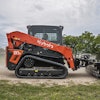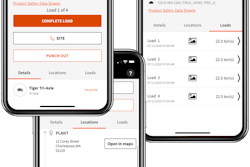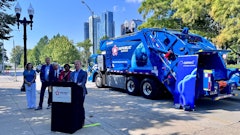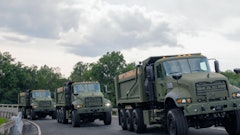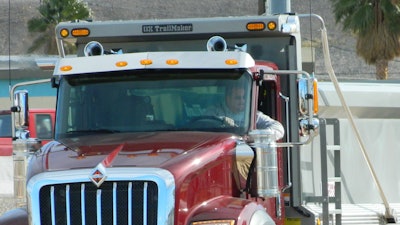
Though the world is starting to recover from the pandemic, operations won’t go back to “normal” for the construction and trucking industries. In fact, some COVID-19 measures were so effective they are now becoming industry requirements, most notably eTicketing.
Until it became a Department of Transportation (DOT) requirement in several states during the pandemic, most companies had no need to seriously consider eTicketing. Companies performing public work that now require it should not view eTicketing as a burden, but rather as an opportunity to move forward digitally in an industry rapidly adopting new technology. Staying informed about the changing landscape and how eTicketing can work comprehensively with existing systems will make the transition easier. 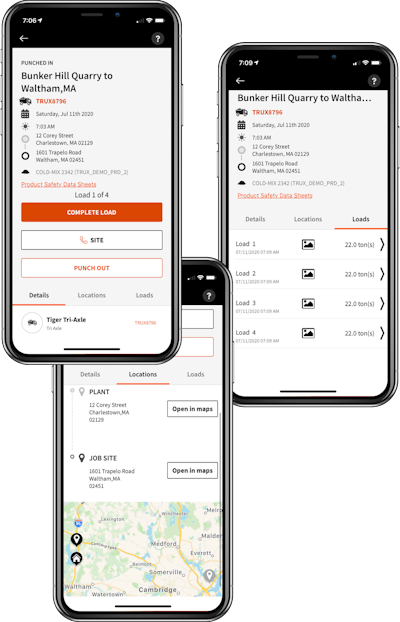 Trux Contactless Ticketing integrates sales orders and scale tickets directly into technology solutions for all participants in the material supply chain. Image source: Trux
Trux Contactless Ticketing integrates sales orders and scale tickets directly into technology solutions for all participants in the material supply chain. Image source: Trux
What is it?
eTicketing is not a glorified digital load slip, though there are similarities. Digital load slips are simply that - a digital copy of a printed load slip that offers the same benefits of a paper load slip, but without need for direct contact. In this case, DOTs do not oversee this process, there is no need to integrate digital load slips into an in-house ticketing system and the only information pulled is exactly what is transcribed on the ticket.
eTicketing is much more comprehensive. In addition to a digital load slip, eTickets provide a summary of the load, the location and verification of the completed load, and the ability to accept and reject material -- all in real-time. eTicketing is connected directly into your scale/ticketing system and allows everyone to work off the same dataset, at the same time, including DOT representatives.
Current State of eTicketing
eTicketing is daunting for many because every state does it just a bit differently, meaning ensuring compliance in each state a company operates in takes careful planning and attention to detail. To find out exact specifications for each state, reach out to local associations or connect with an eTicketing provider to see if their solutions match the needs in your state.
It is often assumed that eTicketing is only valuable if you work on DOT projects. However, there are many benefits to business operations, even if you aren’t required to implement eTicketing for DOT work. Leveraging an eTicketing provider to digitize your tickets can:
- cut down on paper,
- reduce the likelihood of missing tickets,
- expedite the invoicing process
- and reduce the inevitable data entry errors that go along with handwritten tickets.
How to Implement Into Your Operations
The first step to implement eTicketing into your current operations is to get the entire team involved, from the foreman to the back office. The move to this technology will impact their day-to-day work lives, so ensure that you are meeting their needs to set your entire organization up for success. Leave time for ample training, give them the context of the decision to switch to eTicketing and let them ask questions.
It’s also important not to assume that self-research and perceived understanding of compliance will be enough. eTicketing is new for everyone, and contractors and haulers have enough on their plates to add on the stress of ensuring compliance themselves. Technological solutions require technological partners, so consider third-party systems that are designed to track eTicketing updates state by state and provide clear steps on keeping systems running smoothly.
Getting a Return on Investment
If companies only invest in eTicketing solutions, the case could be made that they are only paying to comply, but that is a short-sighted mindset. The fact is that technology is the future of construction, and eTicketing is only the beginning.
Look at all of the opportunities to integrate technology wherever possible in existing operations to enhance efficiency. More often than not, companies can deploy full-scale technology solutions that cover their most pressing problems, such as route optimization, digital dispatching and GPS tracking -- and eTicketing is quickly being integrated into these systems. If eTicketing is an entry point for many companies into digital solutions, they should explore how they can leverage this further in their organization to avoid patchwork systems, gain efficiency, and save on costs in the long run.
eTicketing is new and could be intimidating to many, but it doesn’t have to be. It is part of a larger push in the construction and trucking industries to enter the digital age. By taking the time to understand the technology, get your team comfortable and adopt solutions that can help, you can ensure that the move to eTicketing will be a breeze.
Bart Ronan is the CEO of Trux, a Software-as-a-Service (SaaS) solution designed to help material producers, trucking companies and contractors streamline truck scheduling, driver communication and back-office processes.
